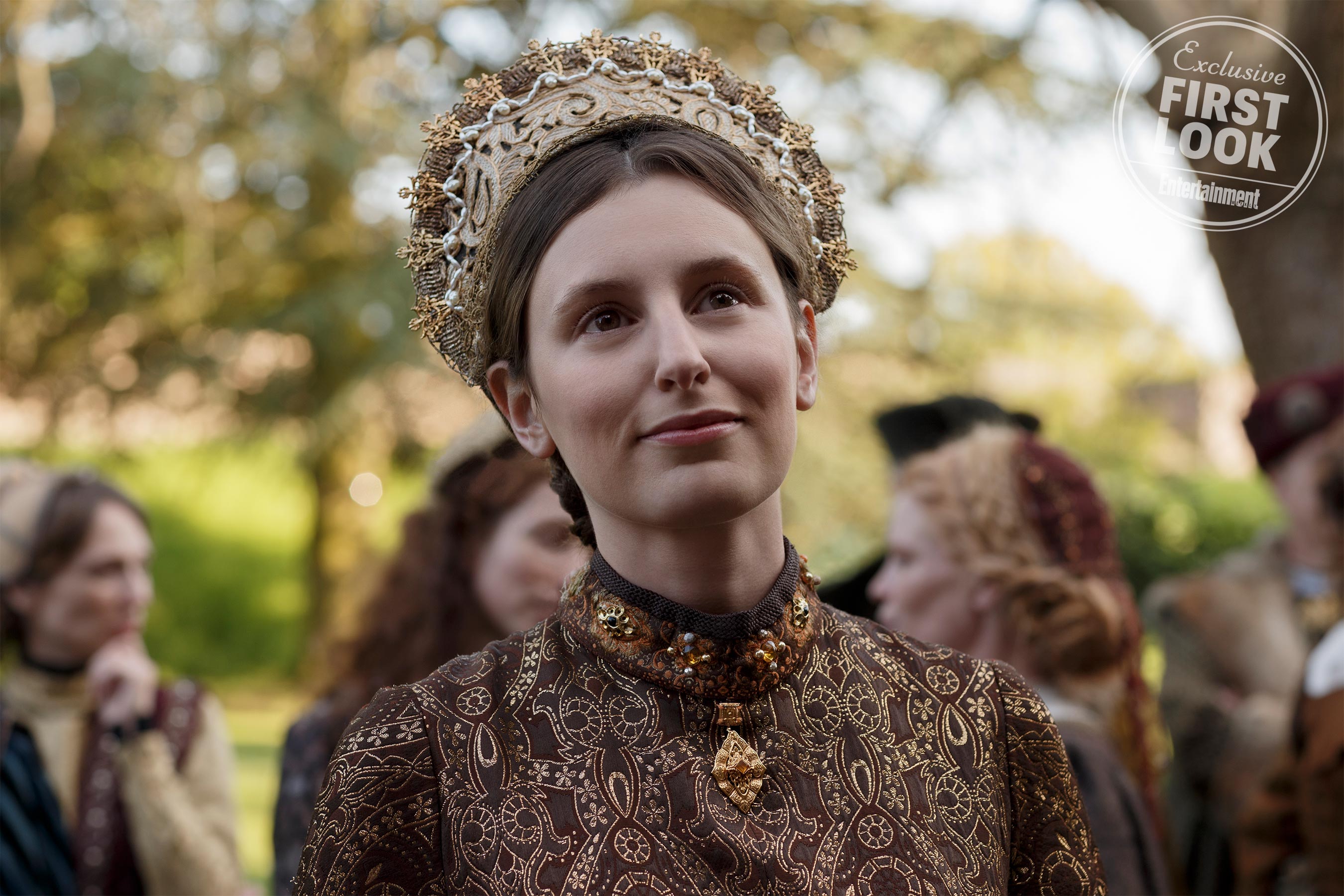Think you know the story of Catherine of Aragon and Henry VIII? Think again.
“By the time we meet Catherine in most [stories], she’s already the frumpy, grumpy ostracized wife stuck in exile,” notes The Spanish Princess co-showrunner Matthew Graham. “What people don’t realize is that he was married to her for twenty-plus years, and they were in love.”
Graham and co-showrunner Emma Frost wanted to show a fierce, passionate Catherine (Charlotte Hope, Myranda on Game of Thrones), a younger and more determined version of a Queen than the one we so often see in popular culture. “No one has written about her when she was a young woman, and she is always characterized as the unwanted old bag, but she was an incredible character,” notes Frost. “She’s actually a very modern character…It was exciting to tell the story of this woman who was so determined to forge her own destiny.”
Frost and Graham were energized by a figure who was told from a young age that God had ordained her to be Queen of England. When tragedy struck, potentially throwing Catherine from that path, she refused to back down, but instead found a way to claim what she believed was rightfully hers – a story that gets its full due in The Spanish Princess.
The story feels pulsing and alive partly because they shot on location in England and Spain at real properties inhabited by the Tudors and Catherine herself. The production team had rare access to Spain’s Alhambra and Alcazar palaces. “We were allowed in for just two hours prior to the Alhambra opening to the public,” says Graham. “To see Catherine of Aragon running around in the gardens of the Alhambra knowing that 500 years ago she did do that is really [extraordinary].”
Based on Philippa Gregory’s novels The Constant Princess and The King’s Curse, the series continues Frost’s interest in adapting the work of the bestselling historical fiction author, having previously brought The White Princess and The White Queen to television. “She is excavating untold women’s stories and if you look at the history books, the women are completely eliminated,” says Frost of Gregory’s work. “History is a story of what a lot of successful white men did, and [Philippa] does the legwork and really digs into these forgotten stories. For most of these women, all that exists are tiny fragments. All that we know is when they were born, when they died, how many children they had, and who they married. But what she does from those scant details is spin a narrative.”
Frost admits sometimes having few historical details about a character is essential for creating a compelling character. “It can be quite a gift to not have too much,” she explains. “There are letters that still exist [from Catherine of Aragon and Henry VIII], so you can get a sense of their voices, but you still always have to distill that through a lens and make it feel very fresh and immediate instead of an alien thing.”
That drive for immediacy also meant including more stories than those of the nobility vying for power. “The other thing we were really keen to explore was a slightly more upstairs-downstairs [story],” says Graham. “Running the ladder from the ladies-in-waiting down to the common soldiery up to the middle classes like Maggie Pole (Laura Carmichael, pictured here) hanging around in court at the whims of the King.”
This more egalitarian approach to the narrative led Frost and Graham to diverge from Gregory’s source material in a major way. “We discovered very early on that this was an incredible opportunity to tell the stories of people of color,” says Frost. Here, we see the true story of crossbow maker Oviedo and Catalina de Cardones, an African Iberian woman who served as Catherine’s lady-in-waiting for 24 years.
While working on The White Princess, Frost was eager to tell more inclusive stories, but a historical advisor informed her that would be anachronistic. “The most cursory Google search will tell you that isn’t true,” she remarks. “There are records of people of color right through from the Roman times in England. In the last couple of years, there have been a couple of extraordinary books written that have gone back to parish records and the real source material to chart through the lives of people of color.”
Working with historian Onyeka Nubia, Frost and Graham excavated stories erased from history to uncover people like Lina and Oviedo, who came to England alongside Catherine of Aragon and faced similar challenges to the Queen in assimilating to English culture and the cold, dreary climate. “[It was an] opportunity to tell stories about people of color in Tudor England that weren’t based around race. For the Tudors, it was more [about] cultural wariness,” says Graham. “The worst thing is if you suddenly have Lina and Oviedo and their issues [are only] about being black. Instead, it’s about being in love and being in a foreign country.”
“This is a story about immigrants, and it was a wonderful opportunity to put those people of color centrally in the show,” says Frost. “Our job is to stand on the shoulders of the facts [to] create characters who will work for a 21st-century audience.” Particularly when those characters are a surprisingly modern 16th-century Queen and her diverse court.
The Spanish Princess debuts on Starz in Spring 2019.
To read more on 2019’s most anticipated TV shows and movies, pick up the new issue of Entertainment Weekly on stands Friday, or buy it here now. Don’t forget to subscribe for more exclusive interviews and photos, only in EW.
Related Links:






